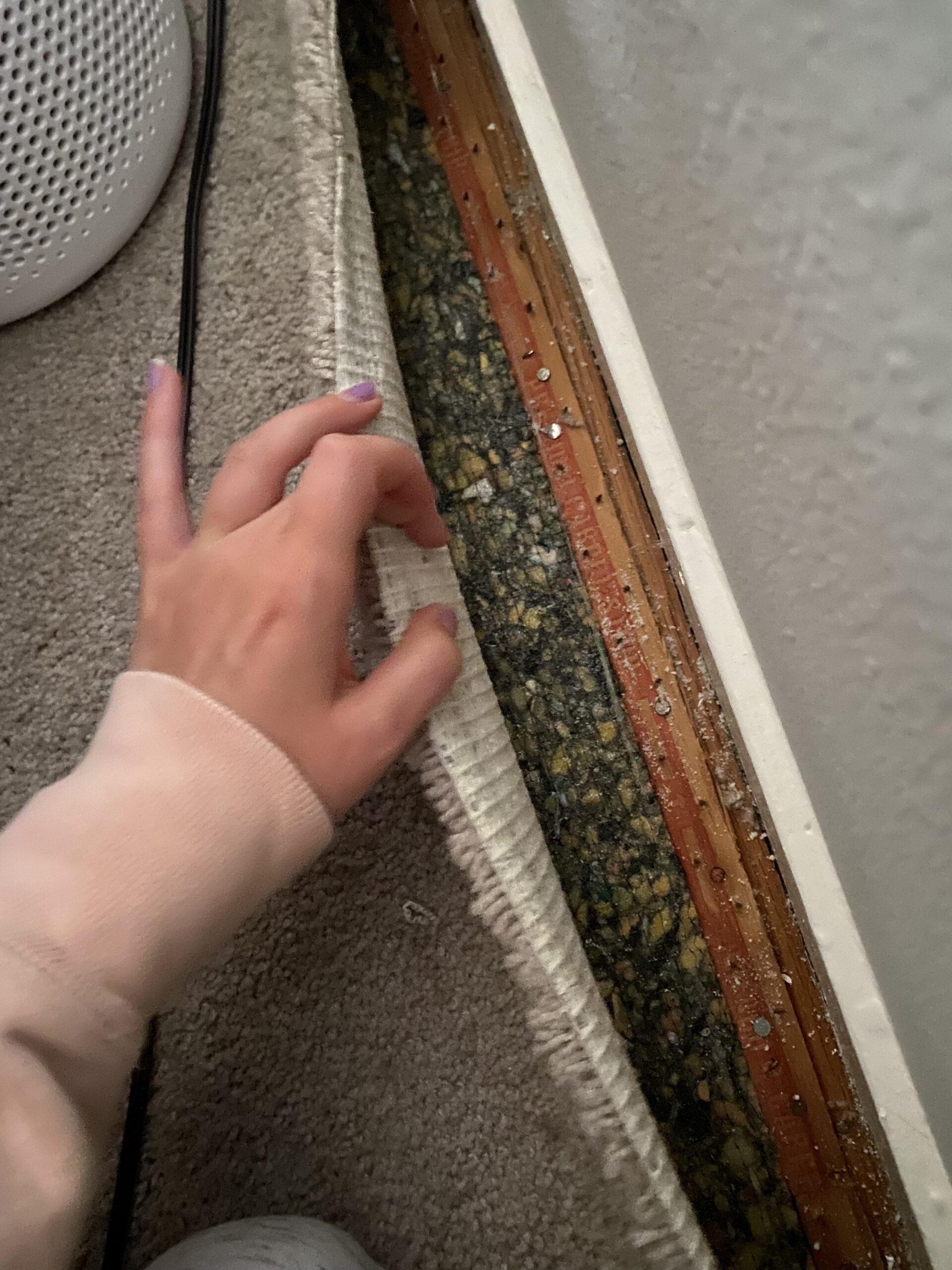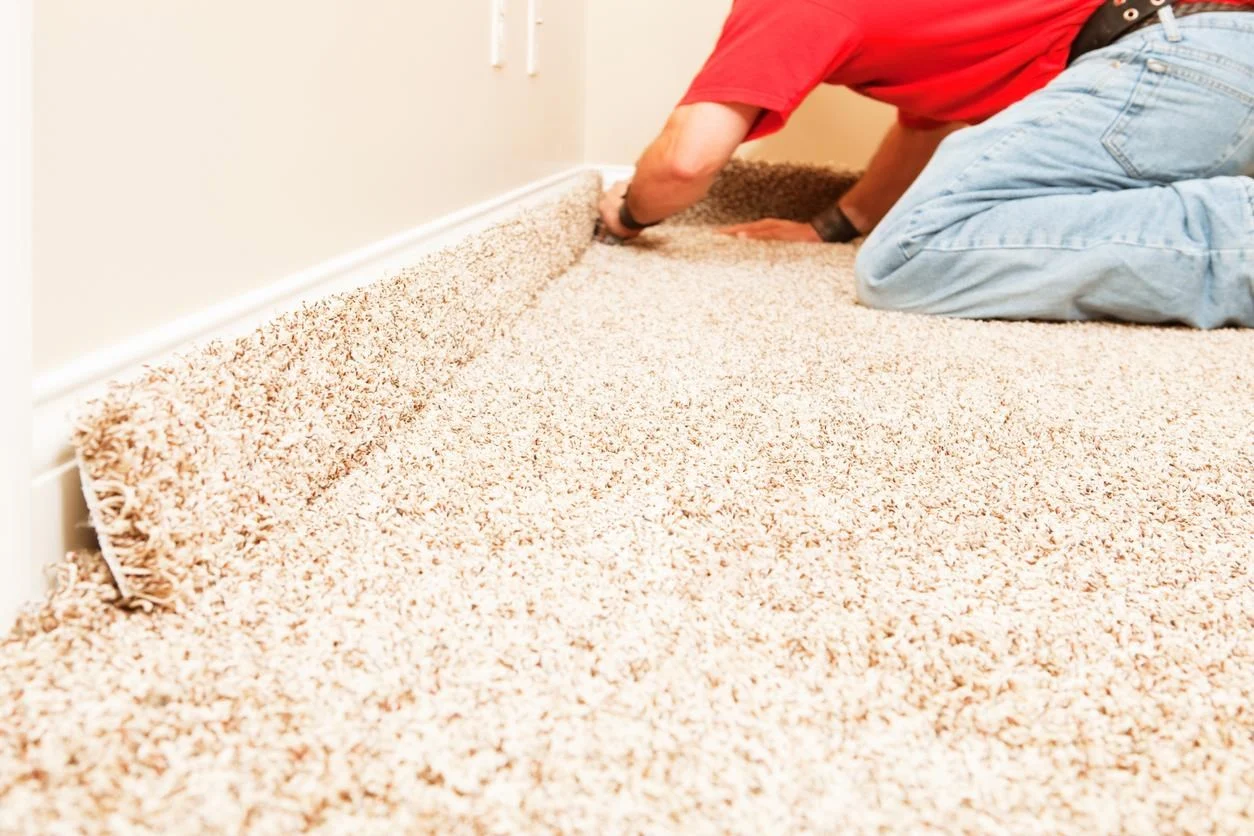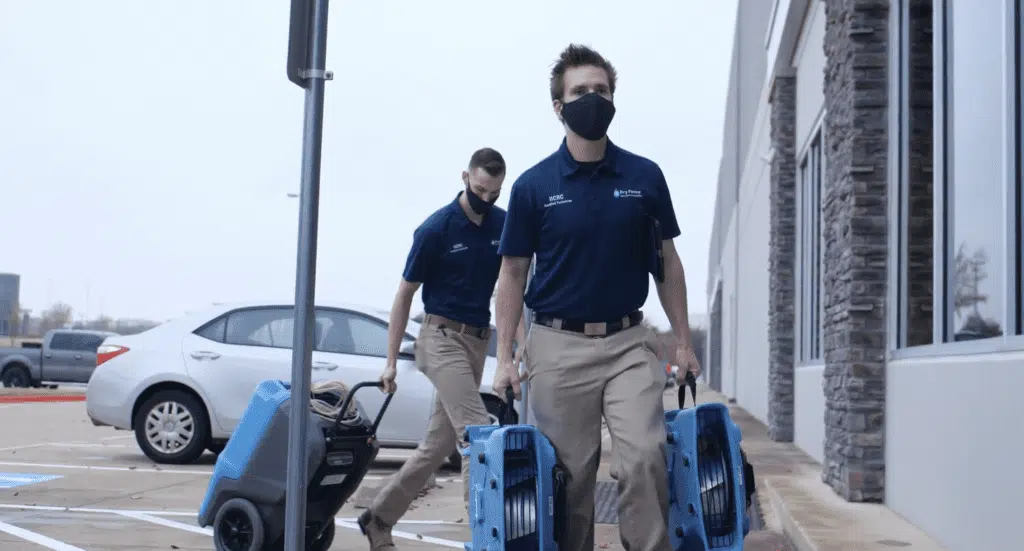Mold growth under carpets can pose serious health risks, especially for people with respiratory issues or allergies. Carpeted areas, especially in high-humidity environments, can trap moisture, making them ideal spots for mold to develop. Learning how to detect mold early can prevent costly repairs and protect your health. In this guide, we’ll walk you through the signs, testing methods, and steps to safely check for mold under your carpet.

Why Mold Grows Under Carpets
Mold thrives in warm, dark, and moist environments, making carpeted areas a prime location if they’ve been exposed to water or high humidity. Mold spores can become embedded in the carpet fibers, padding, and even in the flooring below. When mold grows undetected, it releases spores into the air, leading to indoor air pollution and potential health hazards. Understanding why mold forms under carpets can help you identify it early and take steps to prevent it from spreading.
Common Signs of Mold Under Carpet
Detecting mold early can save you from more extensive and expensive remediation efforts. Here are the most common signs that indicate you may have mold growing beneath your carpet:
| Sign | Description |
|---|---|
| Musty Odor | A persistent musty or damp smell is often one of the first signs of mold presence under carpet. |
| Discoloration or Stains | Dark green, brown, or black patches on the carpet surface can be indicators of mold growth. |
| Visible Mold Growth | Any visible mold on the carpet fibers or edges is a clear sign that mold has developed underneath. |
| Increased Allergy Symptoms | If you or others experience allergy-like symptoms (sneezing, coughing, itchy eyes) that worsen indoors, mold may be present. |
| Damp or Sticky Carpet | A carpet that feels persistently damp or sticky is likely trapping moisture, creating an ideal environment for mold. |
Health Risks of Mold Under Carpet

Mold under your carpet can have significant health implications, especially for those who suffer from respiratory issues, asthma, or allergies. Mold exposure can lead to symptoms such as:
- Respiratory Issues: Breathing in mold spores can aggravate asthma and lead to coughing, wheezing, and shortness of breath.
- Allergic Reactions: Mold exposure is known to trigger allergic reactions, including skin rashes, itchy eyes, and nasal congestion.
- Headaches and Fatigue: Prolonged exposure to mold spores can result in headaches, chronic fatigue, and general malaise.
- Increased Risk of Infection: People with weakened immune systems are more susceptible to mold-related infections.
How to Test for Mold Underneath Your Carpet
If you suspect mold under your carpet, there are several ways to confirm its presence. Here’s a breakdown of the most effective methods for testing mold under carpeted areas:
1. Visual Inspection
The first step in detecting mold is a thorough visual inspection. Lift a corner of the carpet and check for any signs of mold on the underside of the carpet or the padding below. Look for discolored spots, black or green patches, and any obvious signs of mold growth.
2. Smell Test
A strong musty odor emanating from the carpet is often a sign of hidden mold. Mold has a distinctive, damp smell that is hard to miss. Sniff close to the carpet fibers and padding for any noticeable odor.
3. Moisture Meter Test
Using a moisture meter can help determine if there’s trapped moisture under your carpet. High moisture levels can indicate that mold is likely present. Simply place the meter on the carpet and check the reading. High readings signal that the area may need further inspection.
4. Professional Mold Testing
If you’re unsure about DIY testing, consider hiring a certified mold inspector. Professional inspectors use specialized tools like infrared cameras and air quality meters to detect mold hidden under carpets and other surfaces.
Preventing Mold Growth Under Carpet

Preventing mold under carpets requires a proactive approach to moisture control and regular maintenance. Here are some effective prevention strategies:
- Control Humidity Levels: Keep indoor humidity levels below 60% using dehumidifiers or air conditioners.
- Address Water Damage Promptly: Clean and dry any water spills or leaks immediately to prevent moisture buildup.
- Use Anti-Microbial Carpet Pads: Consider using mold-resistant carpet padding to reduce the chances of mold growth.
- Ventilate Properly: Ensure proper airflow in rooms with carpeted floors by opening windows and using fans or exhaust systems.
Steps for Safely Removing Mold Under Carpet
Once you confirm the presence of mold under your carpet, it’s essential to address it promptly and safely. Follow these steps for effective mold removal:
- Prepare the Area: Remove furniture from the area and seal off the room to prevent mold spores from spreading.
- Protect Yourself: Wear protective gear, including gloves, a mask, and goggles, to avoid exposure to mold spores.
- Lift the Carpet: Carefully peel back the carpet and inspect the underside for mold. Discard any heavily infested carpet and padding.
- Clean and Disinfect: Use a mold-killing solution to clean the subfloor. Let it dry completely before replacing the carpet.
- Install a New Carpet Pad: If the mold was extensive, replace the padding with an anti-microbial option to prevent future growth.
Common Questions About Mold Under Carpets

Here are answers to some frequently asked questions about identifying and dealing with mold under carpets:
| Question | Answer |
|---|---|
| What does mold under carpet smell like? | Mold under carpet typically smells musty, damp, or earthy. It has a distinct, unpleasant odor that is hard to miss. |
| Can I clean mold under carpet myself? | Small mold patches can sometimes be cleaned with mold-killing solutions, but professional remediation is recommended for larger areas. |
| Is mold under carpet dangerous? | Yes, mold can release harmful spores that cause respiratory issues, allergies, and other health risks, especially in sensitive individuals. |
| How can I prevent mold from growing under my carpet? | Maintaining low indoor humidity, promptly cleaning spills, and using anti-microbial padding can help prevent mold growth. |
| Should I replace carpet with mold underneath? | If the mold is extensive, replacing both the carpet and padding is the safest option to eliminate all traces of mold. |
Conclusion
Knowing how to detect mold under your carpet is essential for protecting both your home and health. By staying alert to the signs of mold, performing regular inspections, and understanding when to seek professional help, you can effectively manage mold issues before they become severe. Implementing preventive measures, like controlling humidity and cleaning spills immediately, will help keep your carpeted spaces mold-free for the long term. If you suspect extensive mold growth under your carpet, contacting a certified mold remediation expert is the best course of action to ensure a safe and thorough removal.

